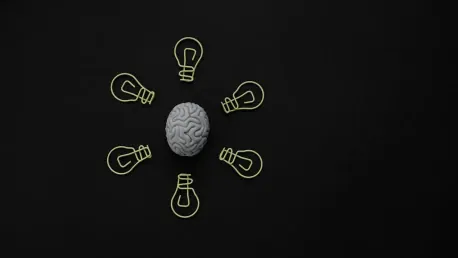The brain’s ability to form memories and learn from experiences is a complex process that involves different types of conditioning. Recent research from Tel Aviv University has shed light on how the brain manages conflicting learning systems, specifically classical and operant conditioning. This groundbreaking study, conducted using fruit flies as a model organism, reveals the competitive interaction between these two types of conditioning and the brain mechanisms that prioritize one over the other.
The Basics of Classical and Operant Conditioning
Understanding Classical Conditioning
Classical conditioning involves passive associations between stimuli. This type of learning is best exemplified by Ivan Pavlov’s famous experiment where a dog learned to associate the sound of a bell with food. When the bell rang, the dog would salivate, anticipating food. This form of conditioning relies on the brain forming a connection between two stimuli, leading to a learned response. In this simple yet powerful model, the dog’s automatic response to the bell illustrates how classical conditioning can shape behavior through repeated pairings.
The essence of classical conditioning lies in its ability to create an anticipatory response to a previously neutral stimulus. This phenomenon shows that learning can occur even without the active involvement of the learner in seeking or avoiding outcomes. Instead, the learner passively forms connections, which can subsequently influence their future behavior. Classical conditioning is foundational in understanding how automatic reactions can be developed, making it a critical aspect of how the brain processes and retains information.
The Mechanism of Operant Conditioning
In contrast, operant conditioning is based on learning from one’s own actions and their outcomes. This type of conditioning occurs when behaviors are directly associated with consequences. For example, a behavior that yields a positive outcome is likely to be repeated, while a harmful behavior is avoided. Operant conditioning involves active decision-making and learning from the results of one’s actions. The feedback from the environment plays a crucial role in shaping and reinforcing behaviors over time.
Operant conditioning can be observed in various real-life scenarios, reflecting the principle that consequences influence behavior. For instance, a student who receives praise for good grades is motivated to continue studying hard, while a person who experiences a negative reaction after a specific behavior is likely to avoid repeating it. This conditioning method underlies many behavioral training programs and is essential for teaching new skills. It requires an active participant who learns through trial and error, differentiating it from the more passive learning seen in classical conditioning.
The Competitive Nature of Learning Systems
Experimentation with Fruit Flies
The researchers at Tel Aviv University conducted experiments using fruit flies to understand how classical and operant conditioning interact. The flies were subjected to both types of conditioning simultaneously. Under classical conditioning, they associated a smell with an electric shock and responded by freezing. Under operant conditioning, they learned to flee from the smell to avoid the shock. However, when both types of conditioning were attempted together, the flies exhibited confusion and failed to form clear memories.
The fruit flies’ inability to form clear memories when both types of conditioning were applied highlights the competitive nature of these learning systems. This finding indicates that the brain struggles to manage both types of learning at the same time. The confusion observed in the fruit flies suggests that one type of conditioning must be suppressed for the other to take precedence. This revelation provides a deeper understanding of how the brain prioritizes different types of information and experiences, ensuring that one learning system dominates in a given situation.
Prioritization of Learning Systems
The study revealed that the brain cannot effectively handle both types of conditioning simultaneously. The brain’s navigation center plays a decisive role in actively suppressing one learning system to allow the other to dominate. This mechanism ensures that only one type of memory system is in operation at any given moment, preventing conflicting behaviors and confusion. The brain’s strategy of prioritizing one learning method over another is essential for maintaining cognitive clarity and effective behavioral responses.
This prioritization mechanism becomes particularly evident when the brain faces complex environments where multiple stimuli and responses are required. By activating one memory system and suppressing the other, the brain avoids the potential confusion that could arise from trying to process conflicting information simultaneously. This adaptive strategy ensures that our actions and reactions remain coherent and contextually appropriate, which is vital for survival. The implications of this prioritization extend to all forms of learning and memory consolidation, shedding light on the intricate workings of the brain.
Implications for Human Learning and Memory
Insights into Human Brain Function
Although the study was conducted on fruit flies, the findings have significant implications for understanding human brain function. Human brains, while more complex, share fundamental similarities with those of flies. The research provides insights into how different memory systems compete and why multitasking can sometimes lead to forgetting important information. Understanding the brain’s strategy for managing learning systems can help explain everyday cognitive experiences and challenges, such as the difficulty in focusing on multiple tasks simultaneously.
Our daily lives often require us to switch between different types of tasks and learning modalities. The insights from this research highlight why certain tasks are more challenging to juggle together, offering a scientific explanation for cognitive overload. By recognizing the limitations and strengths of how our brains manage different types of learning, we can develop more effective strategies for education and workplace productivity. This knowledge also underscores the importance of focusing on a single task or learning system to optimize memory retention and performance.
Potential Applications in Treating Learning Disorders
The study’s findings could inform new strategies for treating learning disorders. By understanding how the brain prioritizes different learning systems, researchers can develop therapies aimed at enhancing memory formation. This could be particularly beneficial for individuals with conditions like Attention Deficit Hyperactivity Disorder (ADHD) or Alzheimer’s disease, where memory and learning processes are disrupted. Therapeutic interventions could target specific neural pathways to improve cognitive function and minimize the symptoms associated with these disorders.
Potential applications of this research extend beyond treatment into preventive measures. For instance, educational programs could be designed to align more closely with how the brain processes and prioritizes information. By leveraging the brain’s natural mechanisms for learning, these programs could enhance student outcomes and reduce cognitive strain. In clinical settings, personalized treatment plans based on an individual’s unique cognitive profile could lead to more effective management of learning and memory disorders, improving patients’ quality of life.
Redefining Memory Formation
Challenging Longstanding Beliefs
The research challenges longstanding beliefs that classical and operant conditioning could coexist and complement each other in the brain’s learning processes. Previously, it was assumed that these two memory systems worked together and were additive. However, the study highlights that these memories cannot coexist without causing disruption, fundamentally altering our comprehension of memory formation. Recognizing the competitive nature of these systems necessitates a reevaluation of existing theories and educational practices.
This new understanding prompts a revision of how learning environments and educational methods are designed. Instead of assuming that all types of learning can seamlessly integrate, educational strategies might need to consider the unique and exclusive nature of different conditioning systems. By aligning teaching methods more closely with how the brain naturally distinguishes between learning processes, educators could enhance the effectiveness of instruction and reduce cognitive load, leading to improved learning outcomes for students.
Neural Circuit Plasticity
By employing sophisticated genetic tools, the researchers explored the distinct neural circuits underlying each type of conditioning. They discovered that plasticity in the neural pathways associated with classical conditioning is prevented when operant conditioning is active, and vice versa. This plasticity, which refers to the brain’s ability to change and adapt as a result of experience, cannot be formed simultaneously for both learning types without leading to interference and disrupted learning. This discovery underscores the intricacy of the brain’s adaptive mechanisms in response to different types of stimuli.
The study’s findings about neural plasticity extend to broader implications for understanding brain development and adaptability. The distinct pathways that support different types of conditioning reveal the brain’s specialized approach to handling various learning scenarios. This division allows for efficient and targeted learning experiences, but also highlights the brain’s limitations in multitasking across different types. Recognizing these limitations is crucial for developing strategies that align with the brain’s natural learning processes, potentially leading to improved educational methods and therapeutic approaches.
Future Research and Therapeutic Practices
Exploring Higher Cognitive Functions
The discovery of the brain’s active suppression mechanism to resolve potential conflicts in learning opens new avenues for understanding higher cognitive functions in animals and humans. By demonstrating that the brain employs a deliberate strategy to maintain the integrity of learning processes, this research paves the way for new therapeutic approaches. Addressing how this mechanism influences more complex cognitive functions could lead to innovations in treating cognitive impairments and enhancing mental performance.
Future research could explore how different types of learning systems influence cognitive functions such as decision-making, problem-solving, and emotional regulation. The principles uncovered in this study provide a framework for investigating these higher functions in greater detail. Additionally, understanding the brain’s active suppression mechanism could lead to new techniques for managing cognitive load in high-stress environments, improving performance, and reducing the risk of burnout. These approaches could have practical applications in various fields, including education, military training, and psychological therapy.
Developing Interventions
The process by which the brain forms memories and learns is incredibly intricate, involving various types of conditioning. Recent research from Tel Aviv University has offered new insights into how the brain manages these conflicting learning systems, focusing specifically on classical and operant conditioning. This pioneering study, utilizing fruit flies as a model organism, uncovers the competitive interaction between these two forms of conditioning. It also delves into the brain mechanisms that determine which type of conditioning takes precedence over the other. The findings are significant because they provide a deeper understanding of the fundamental processes of learning and memory. By observing the fruit flies, researchers were able to identify how the brain prioritizes one conditioning method over the other, depending on the situation. Their work is not only groundbreaking but also opens new avenues for exploring how similar mechanisms might function in more complex organisms, possibly leading to advances in neuroscience and psychology.









